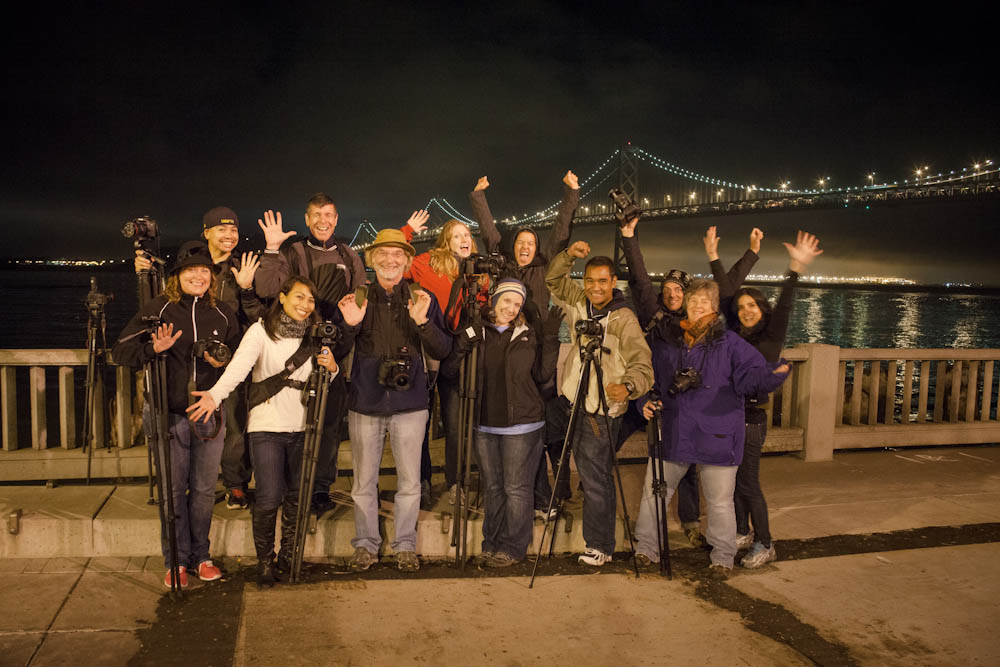Ok I got a slightly more comprehensive guide to how to take night shots of people.
First you need to figure the settings on your camera for a good exposure for the background.
1. You would want to choose the slowest shutter speed possible which you can still hand hold. Typically this will be 1/(focal length). E.g. If you are using a 50mm prime you should set the shutter speed at 1/50s. If you have a stabilised lens even better, e.g. if you have a 18-55mm kit lens with VR/IS, you can try setting the zoom at 18mm and the shutter speed at 1/10s. Some people can handhold very slow shutter speeds, some can't, so do your own experiments.
2. Set the widest aperture you are comfortable with. If you have a f1.4 lens and you are confident about getting the focus correct, go ahead and set it at f1.4.
3. Adjust the ISO until you get a good exposure for your background. If the background is very bright you may wish to increase the shutter speed or close down the aperture to compensate.
Next you need to adjust flash power for your subject.
1. Start from 1/16 power on your flash and take a test shot. Adjust your power up or down from there.
2. Sometimes you may find that even the lowest power setting on the flash is still too bright for the subject. This is possible when the ambient is very dark. You can either try to bounce the flash if there is something to bounce off, or you can close down the aperture and try to find a way to stabilize your camera so that you can use an even slower shutter speed to compensate (e.g. by putting it on a railing/table/tripod etc)
 Kamen Rider Kiva
Kamen Rider Kiva by
CorneliusK, on Flickr
24mm, f1.4, 1/15s, iso 800. Handheld shot
3. Another tip is that if it is VERY dark, you can use very slow shutter speeds and still get a sharp pic of your subject. The reason is that the duration of the flash's light is very fast, it is like you are using a fast shutter speed.
 Sword Art Online: Heathcliff
Sword Art Online: Heathcliff by
CorneliusK, on Flickr
85mm, f5.0 (stopped down to get the moon in focus), 0.4s, iso 800. Also handheld
Hope this helps!







